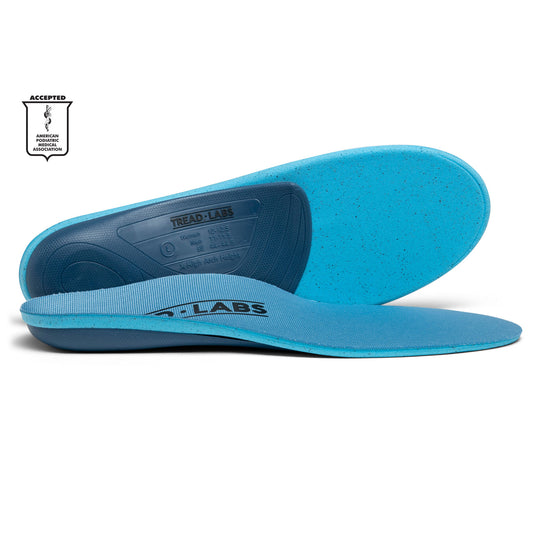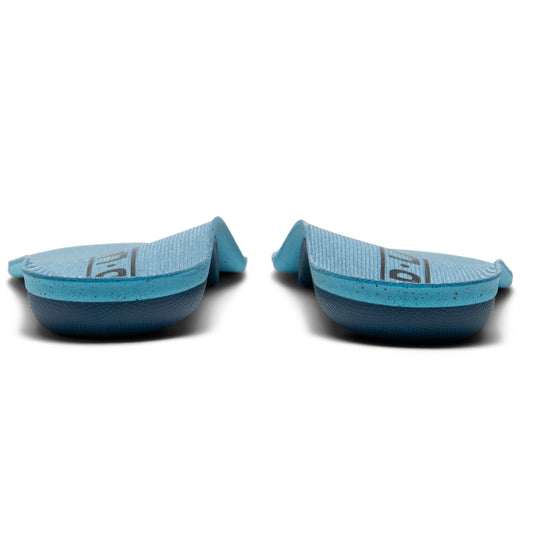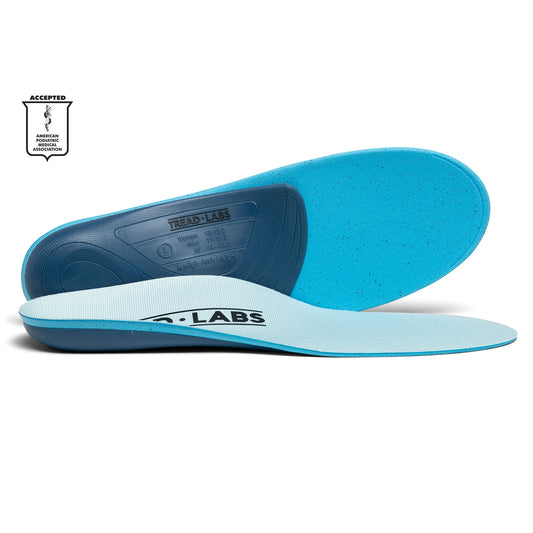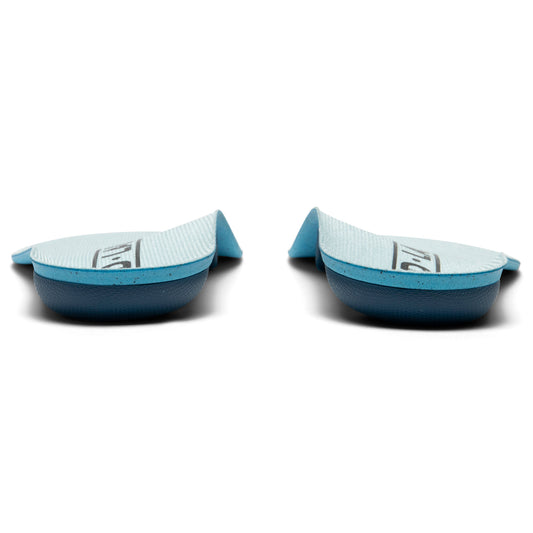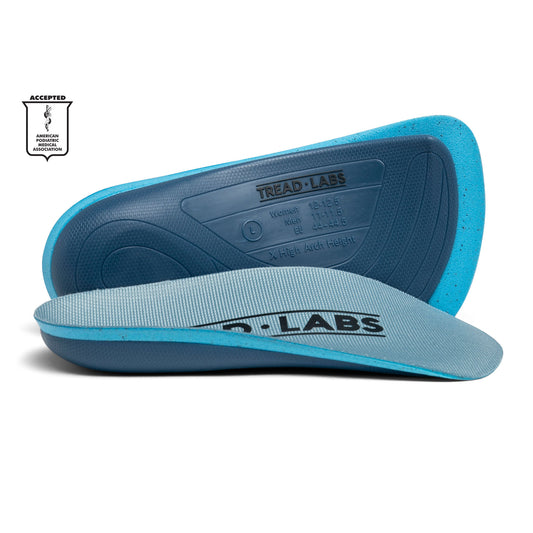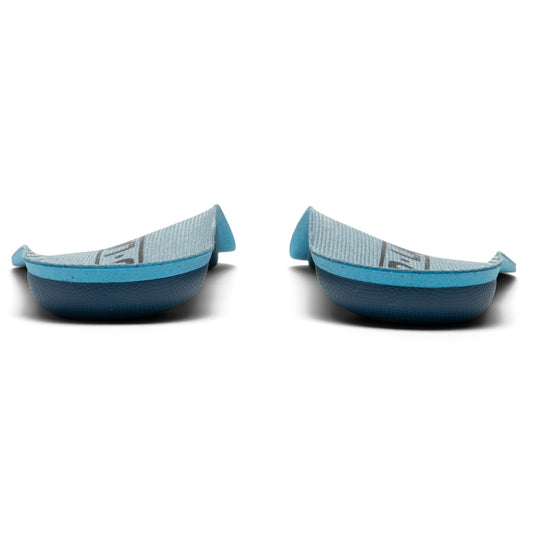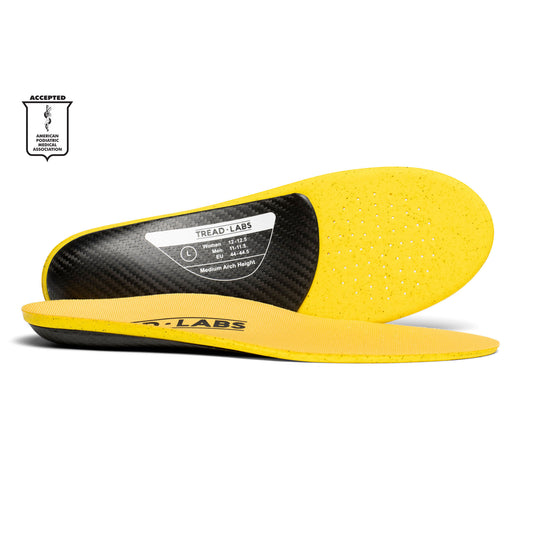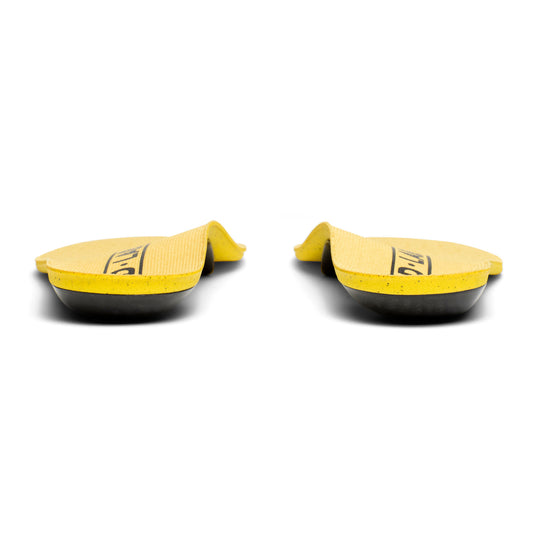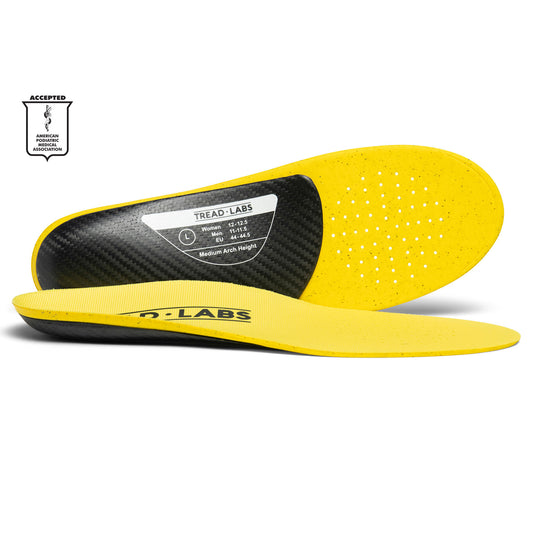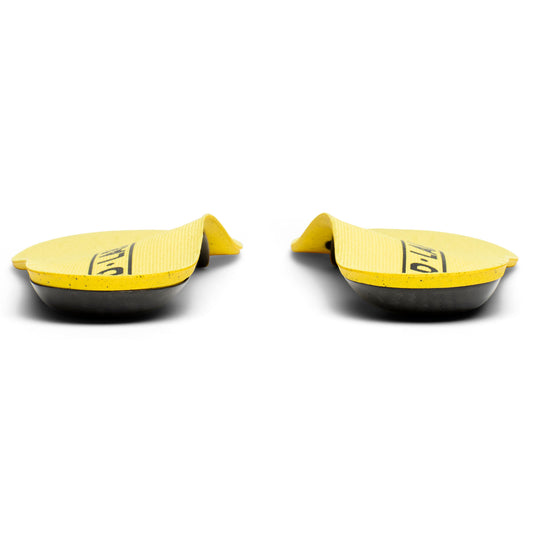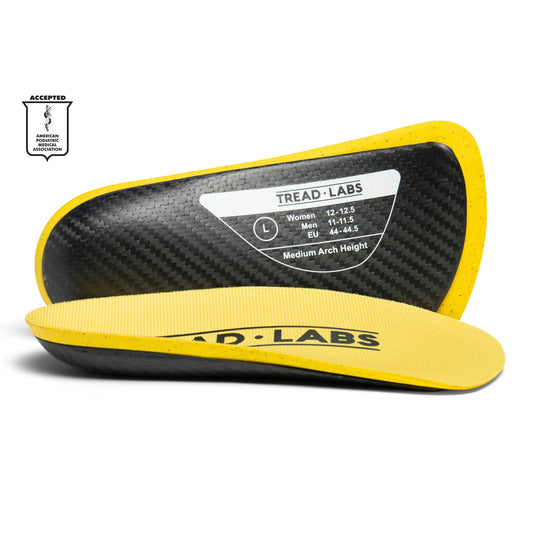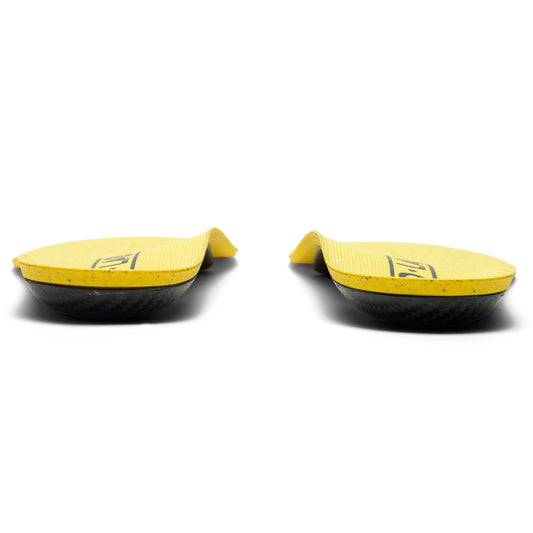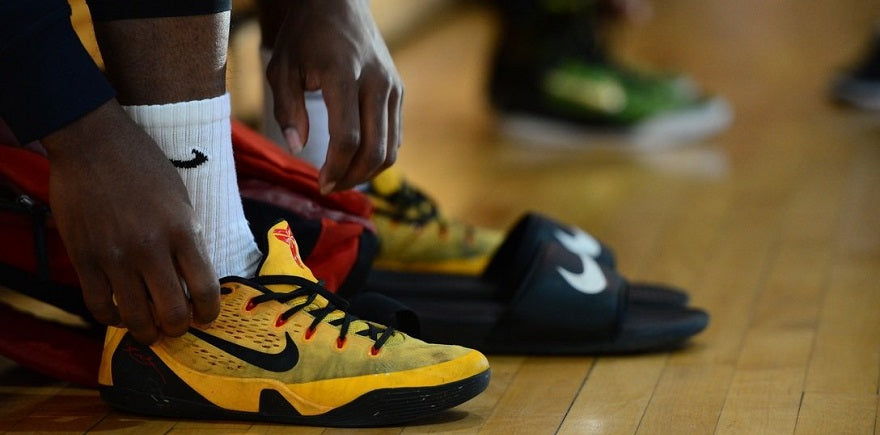
How Basketball Insoles Can Change Your Game
Sure, being tall can be an advantage in basketball, but so is your ability to navigate the court with balance, dexterity, and ease. Quick cuts and absorbing the shock of landing a jump shot require the right pair of shoes. Ones that support your heels, ankles and arches. But to play at the top of your game, you'll want to add something to your footwear.
The Basics:
Basketball puts a lot of stress on your feet. Making sure you have the right footwear and support can help prevent injuries and improve your game.
Common basketball injuries include stress fractures, plantar fasciitis, and basketball heel.
Adding basketball insoles to your sneakers will provide the heel cushioning you need to help reduce the impact of the game on your feet and body. Insoles will also give the arch support you need to prevent overpronation when you run.
The best basketball insoles will be durable, flexible and have a deep heel cup for shock absorption. We recommend Tread Labs Pace insoles to help correct your biomechanical issues and provide heel cushioning.
Need to Know
Whether you’re playing for pleasure or are on your way to the pros, there’s one thing that’s always true about basketball: You play on your feet. Having the right foot support can help you avoid common basketball foot injuries and ensure you have the optimum biomechanics during the game.
Being sidelined by an injury is the worst for any athlete, so it's important to address potential foot problems as soon as you notice something is wrong. Ignoring foot irregularities can lead to permanent injuries that can hamper your game and harm your basketball future.
Table of contents

Common Basketball Foot Problems
Some of the most common foot problems that arise from basketball include stress fractures, plantar fasciitis, flat feet, and “basketball heel."
Stress Fractures
Basketball courts are generally hard wood or concrete surfaces. The stress of constantly pounding your feet as you run and jump on these surfaces can cause small cracks in your bones. These cracks are known as “fatigue fractures,” or “stress fractures.”
While they may start off as minor foot pain, these tiny, hard-to-diagnose bone fissures can, if left untreated, become bone breaks. If you let things get this bad, you’ll be out of the game for a while.
A break can require lengthy rehabilitation that keeps you off the court for a long time—or forever. The good news is there are ways to prevent the development of stress fractures.
Plantar Fasciitis
Plantar Fasciitis is a debilitating, painful condition that develops gradually from overuse of the plantar fascia—the long, flat ligament on the bottom of your foot. Tiny tears in the ligament contribute to pain and inflammation. This is exacerbated whenever you flex your toes upward or stretch your arches.
One of the leading causes of plantar fasciitis in basketball players is the lack of proper support in lightweight basketball shoes. Other factors that can contribute to the development of plantar fasciitis include constant running on hard surfaces, quick direction reversal, and insufficient stretching prior to taking the court.
Symptoms of this condition include:
- Foot and heel swelling
- Stiffness
- Inflammation
- Tenderness
- Pain
Flat Feet & Overpronation
Constant running on hard surfaces can cause your arches to collapse. When you have flat feet, you're at risk for:
- Overpronation
- Leg misalignment
- Heel, knee and leg pain
Basketball Heel
Like plantar fasciitis, the painful heel condition known as “Basketball Heel” is a repetitive injury that is caused by bone or tendon overuse. It can take weeks to resolve, requiring that you stay off the foot and ice it often.

How Basketball Insoles Help Improve Your Game
Footwear companies often encourage basketball players to wear lightweight sneakers that often have minimal support. They promise to help you be light on your feet as you move across the court. Unfortunately, without the right support, you can wind up with serious foot problems that will keep you from moving on the court at all.
But don’t worry. You can still lace up your favorite pair of Jordan’s while getting the support you need in your arch, ankle, and heel. Start by taking out the factory insoles your sneakers came with and replacing them with the best basketball insoles.
How To Pick The Best Insoles For Basketball Shoes
Playing basketball well means being quick on your feet. To perform at your best, you need footwear that will support constant running, jumping, and quick turns on the court.
Factory basketball shoe insoles may suffice for the occasional playground match. But for serious players, basketball insoles with firm support will provide the heel cushioning needed to reduce the impact of the game while increasing the arch support needed to prevent overpronation.
When you're shopping for basketball sneakers, look for:
- Durability & Flex. Choose shoes that offer a combination of strength and flexibility.
- Measure Your Foot. Take careful measurement of your foot to ensure correct sizing when purchasing your basketball sneakers.
- Toe Space. Make sure there is a bit of space between the end of your big toe and the tip of the shoe when fitting your shoes.
- Try Them Out. Jog in place to test the comfort of the shoe’s width, and ensure the heel does not slip.
- Consider The Court Surface. Choose a shoe bottom that is designed for the court surface you intend to play on most. If you will be playing mostly on outdoor courts, pick a shoe with a more durable sole. For indoor courts, look for rubber soles with ribbed bottoms that provide proper traction on slippery surfaces.
- Inspect Your Sneakers For Wear. Replace worn basketball shoes regularly, especially if you play on a team or practice several times a week.
After you've found the right pair of basketball sneakers, you'll want to add the support you need to prevent injuries. The best basketball insoles will have:
- Proper arch support. Basketball insoles can do their job only if they are supporting your foot properly. Find an insert that mimics the contours of your feet, providing even support throughout your arch.
- A deep heel cup. Beneath your heel bone is a fatty pad that acts as a shock absorber for every step you take. Basketball insoles should feature a deep heel cup that keeps the fatty pad centered beneath the heel so that it can absorb shock effectively. Deep heel cups also add to foot stability which improves balance and performance.
- Firm support. Cushy foam insoles with arches that deflect easily won't be able to stand up to the impact that basketball involves. The best insoles for basketball will have firm arch support that limits pronation, improves alignment and prevents injuries like plantar fasciitis and stress fractures.
Watching the game from the bench is no fun. The best way to prevent being sidelined by an injury is having the right equipment to keep you in the game. Adding insoles to your basketball shoes can make all the difference when it comes to keeping you in the game.
Questions? Drop us a line at hello@treadlabs.com. We're here to help.


